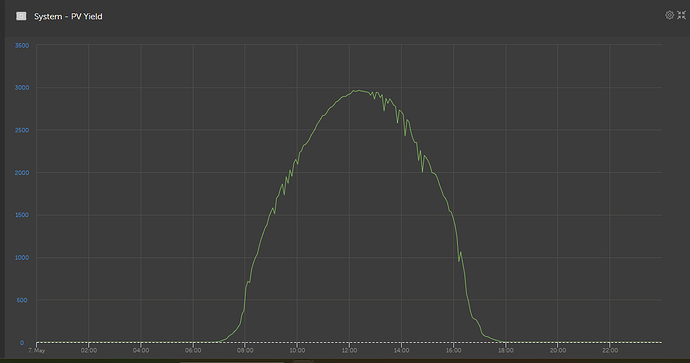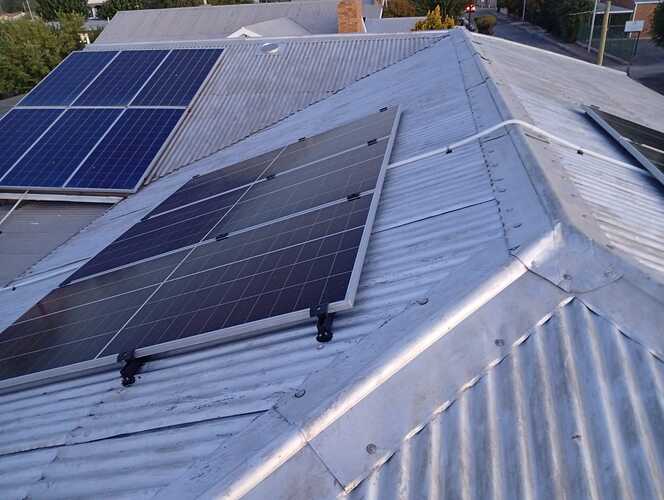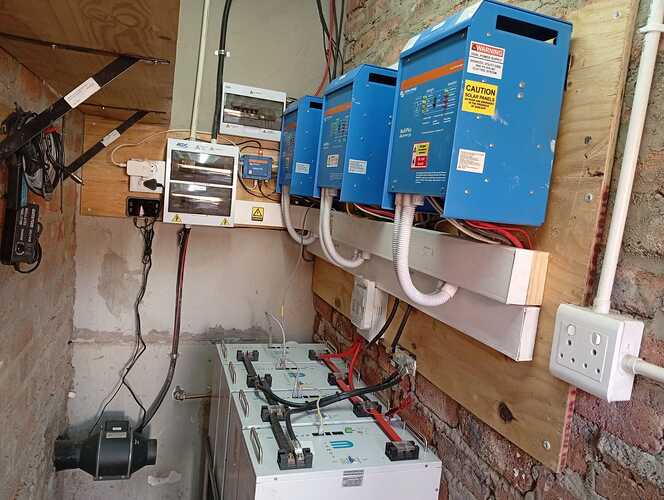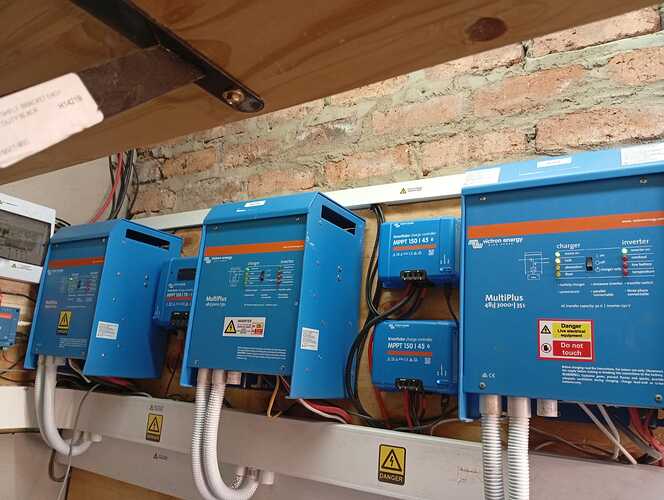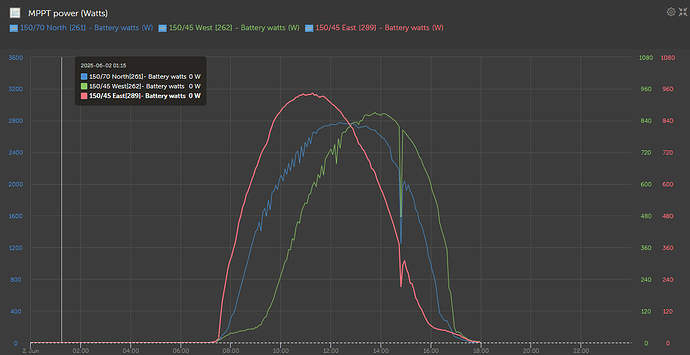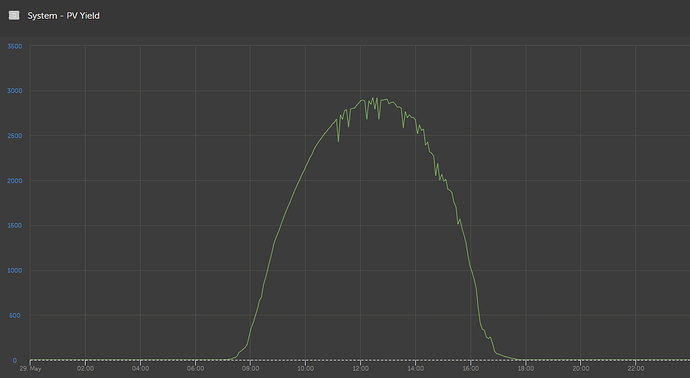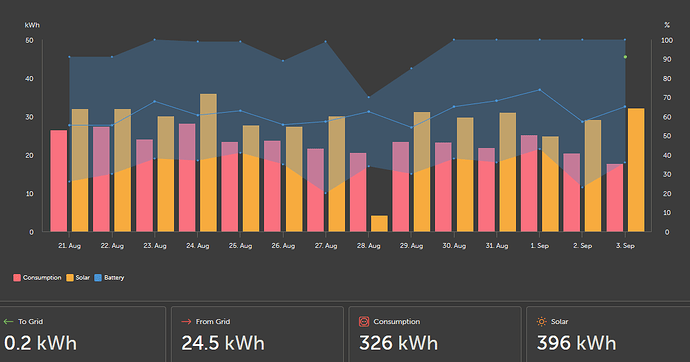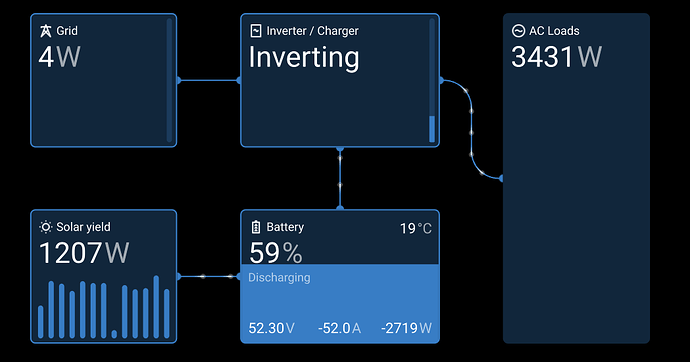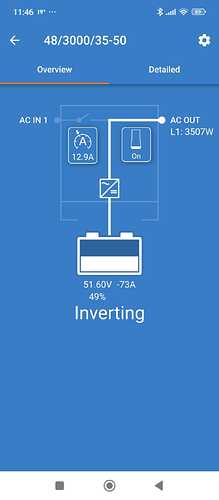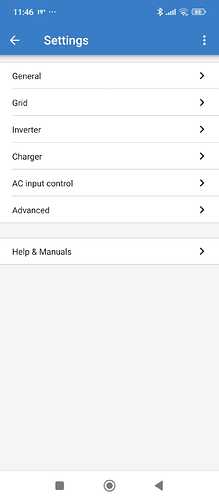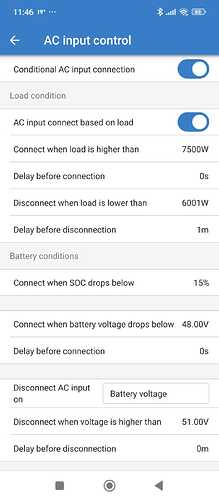All righty then. So my 4th eTower was added (luckily I built the stand to be able to take 4 when I built it) and I installed the East and West facing arrays on Saturday. Today was the first day, luckily a beautiful, sunny day, to see how PV production has increased.
Yesterday I was busy neatening all the wires (except for the solar wires coming through the roof after I ran out of trunking) so production couldn’t be tested properly.
Seeing that the new arrays are laying flat facing East/West at about a 32deg angle, production is not great but I guess sommertime things will change dramatically with the sun being higher in the sky.
Ignore the PVC conduit. I ran out of Bosal galvanized conduit and could not find any stock in town so had to order. I place the PVC conduit where it would be easiest to replace when the galvanized conduit finally arrives. For now there’s about 6m of PVC and the rest is Galvanized metal.
For now, this is what the setup looks like. Some small pieces of trunking to be installed and then new grounding wires. I hammered in 2 new 1m earth spikes while I was busy. One for the inside DB and one for the PV system. I still need to get it checked for a COC so I’m sure there will be something I missed. I just want to let it run for a few days to check for any issues before I do the finishing touches. Oh and I’m busy 3d printing a ducting system for the blower fan which is going to run underneaath the inverters, blowing air upwards through the inverters and MPPT’s. The inline blower fan is electronically controlled and set to start pushing air in from 25deg Celsius upwards, increasing speed as temperature rises. There’s also an Whirly bird thingy on the roof in which I installed a 10" automotive radiator fan which is connected to it’s own 50W solar panel. The roof extractor fan only runs when the sun is shining and works perfectly, even in 45deg Karoo summer days. I actually installed it way back when the room was still used for my 8Kw diesel generator and it kept that cool so I thing it’s going to be fine. The inline fan is also conencted through the Tuya app so I can check the room temps from anywhere, increasing the fan speed should it need be. It never reached more than 36deg throughout the summer though.
There’s still a lot of tidying up to do, shortening and crimping CANbus wires, etc.
I don’t think it looks too bad keeping in mind that I’m a qualified mechanic, not electrician 
This was today’s production per MPPT.
This was total yield 7 days ago, 17.2Kwh production on a perfect winters day in the Karoo,
and this was total PV yield today, 29.2Kwh total production. An increase of 12Kwh. I’m happy with that. My grid breaker has been switched off since yesterday so I haven’t used anything from the grid an my batteries were fully charged and my 150ltr geyser at 65deg at around 3pm. I had to switch on the mains and enable grid feedback just to see what maximum PV production is possible. I’ve fed 4.8Kwh into the grid (which I obviously paid for since I don’t have a bi-directional meter) but it was just a test. I’ve since switched off the mains again and will see what the batteries do overnight. This morning at sunrise they were at 57% SOC.
I’m more than chuffed. If and should I find more batteries I’ve got more than enough roofspace to ad 6 more North facing panels but I really don’t need it. But hey! solar is worse than racecars. You always want more. Only difference is you get a return of investment with solar…not so much with racecars 
So let’s hear the critisicm. I can only improve. At least it’s working as planned.


